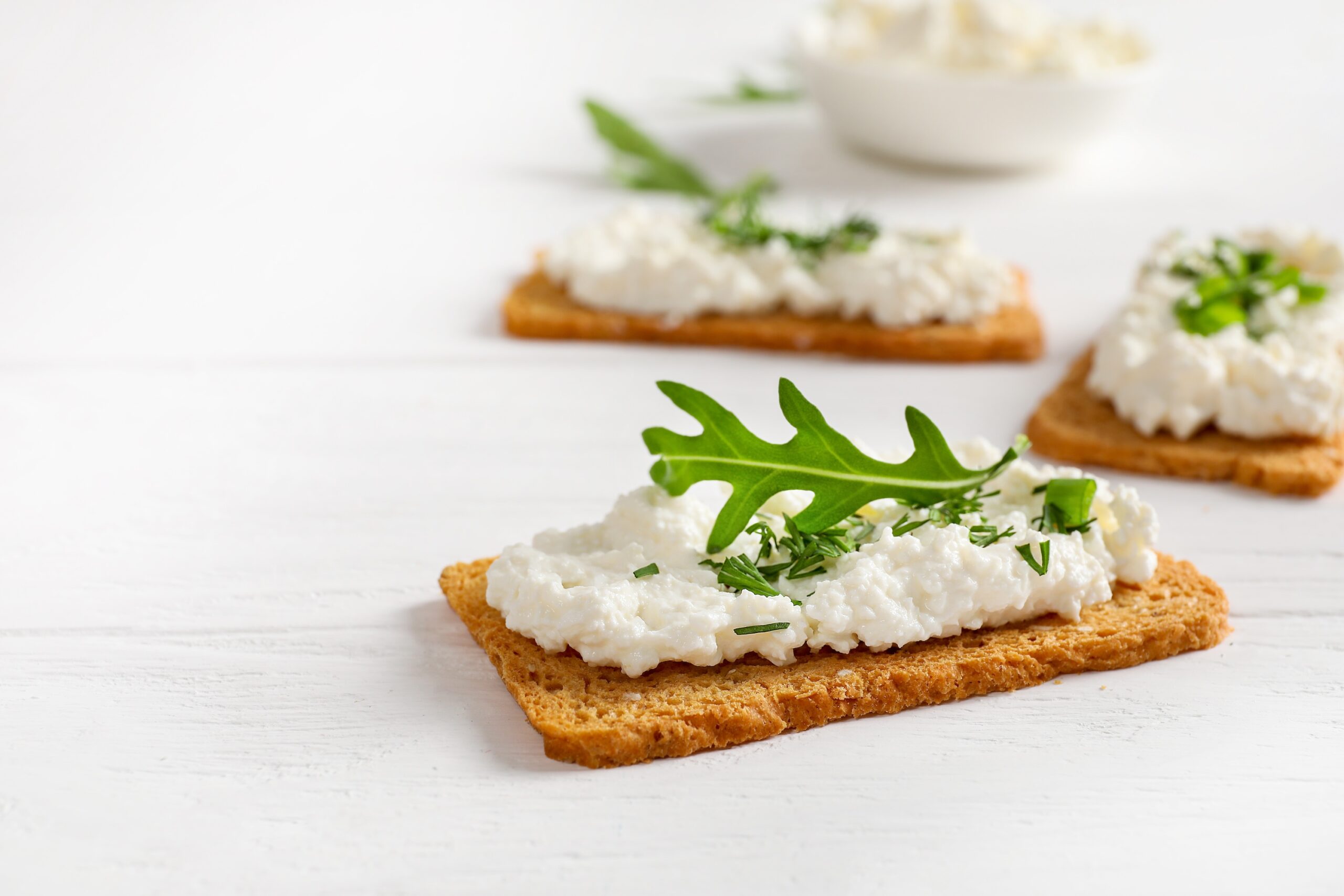Starbucks is shaking things up this fall—and it’s not just about the return of the beloved Pumpkin Spice Latte, though it’s definitely back for 2025. Despite recent news of Starbucks closing stores, the coffee giant is tapping into something customers say they crave just as much as seasonal flavors: more protein.
In addition to the fall menu, which came back in late August, Starbucks introduced a new line of protein-enriched lattes and cold foams on September 29. With these drinks, Starbucks is adding a functional twist to its menu. Think of it as Starbucks’ answer to the protein trend that has reshaped grocery aisles, fitness supplements, and many other restaurant menus.
Protein isn’t just having a moment—it’s topping the list of nutrients Americans say they’re actively trying to add to their diets. According to a recent survey, 8 in 10 people report making a daily effort to boost their intake, something Starbucks says directly motivated its decision to spotlight protein in this latest launch.
How much protein will you get from one of these new drinks? Some deliver as much as 36 grams of protein in a grande size—that’s about the same as you’d get from a 4-5 ounce chicken breast. For Starbucks fans, it may sound like an easy way to increase protein intake without much effort.
But here are the real questions: Does added protein actually make these drinks healthy? Do you really need that much extra protein—and does it matter where it comes from? And if you’re trying to improve your diet or lose weight, how should you approach these new Starbucks drinks?
To help unpack it, we asked Kayla Reynolds, MS, NASM-CPT, Director of Knowledge, Learning, & Behavior at Noom, to share her perspective. She breaks down the potential benefits of adding protein to your coffee drinks, what to watch out for, and how to fit these trendy drinks into a balanced routine.
Why are protein drinks so popular?
Protein has become one of the most in-demand nutrients for today’s health-conscious consumer. Surveys show that Americans are actively looking for more ways to add it to their diets—and that demand has fueled the rise of protein-enhanced snacks, powders, and even diets like keto and the carnivore diet.
And overall, this is a good thing. Getting enough protein offers some powerful health benefits:
- Satiety: Protein digests slowly, helping you stay fuller longer and support weight loss efforts.
- Healthy aging: Protein helps combat the natural loss of muscle that comes with age.
- Weight management: A higher protein intake helps preserve muscle mass for people trying to lose weight, which encourages the body to burn fat instead of muscle.
- Energy and immune support: Protein also plays a vital role in energy production and keeping your immune system strong.
As Reynolds explains: “With people looking to add more protein to their diet, it’s no surprise that protein smoothies, shakes, and now even lattes have become more popular. Enjoying a high-protein drink can be an easy way to boost daily protein intake.”
What Starbucks’ new protein drinks offer
So what’s actually new on Starbucks’ protein menu? It’s less about brand-new drinks and more about giving classics a protein-powered makeover. The only new choice is banana cream syrup cold foam. Everything else is a twist on existing favorites, now boosted with whey protein—whether mixed into the milk, the cold foam, or both.
Starbucks has rolled out 11 protein-packed upgrades. These drinks contain whey protein in two forms:
- Protein-boosted milk: 2% milk is blended with whey protein powder, adding 12 to 16 grams of protein to drinks and boosting lattes to 27 to 36 grams total protein. Protein-boosted milk is made daily at the store and can be added to other drinks, too, not just these new menu options.
- Protein cold foam: This popular topping can now come with 15 grams of protein. It’s made from cream blended with whey protein and comes in several different flavors.
Many of Starbucks’ new protein drinks are simply high-protein versions of existing menu items. At first glance, that sounds like a win—you get more protein in the same drink. But here’s the catch:
- The protein-boosted milk base is only made with 2% dairy milk, so you can’t swap it for lower-fat or plant-based alternatives.
- The protein cold foam, just like all cold foams, can’t be adjusted to use low-fat cream because it needs to stay whipped.

That means when you compare the protein and non-protein versions side by side, you’ll notice the higher-protein drinks are higher in calories and fat. Although you’re adding a healthy boost (protein), the extra calories are an important consideration if you want to lose weight. Here’s a look at the differences:
Chocolate Cream Cold Brew vs. Chocolate Cream Protein Cold Brew
| Nutrition | Regular version | Protein version |
|---|---|---|
| Calories | 240 | 330 (+90) |
| Total Fat | 14 g | 15 g (+1 g) |
| Carbohydrates | 26 g | 28 g (+2 g) |
| Sugar | 25 g | 26 g (+1 g) |
| Protein | 3 g | 19 g (+16 g) |
You can cut down on the total sugar and calories by selecting drinks made with sugar-free syrups, but Reynolds doesn’t suggest it: “Rather than replacing with sugar-free syrups, I’d recommend customizing the drink to just 1 to 2 pumps of syrup. Then, you can add flavorful spices like cinnamon and nutmeg at the counter. That way, you’re actually cutting down on sugar instead of swapping it for artificial sweeteners, which often don’t always provide the same sense of satisfaction and can also contribute to sweet cravings. Over time, this can help retrain your taste buds to enjoy less sweetness while still keeping your drink enjoyable.”
Nutrition facts and calories for Starbucks protein drinks
Here are the new protein cold foam and protein milk-based lattes with the associated nutritional content for the grande size (16-ounces).
Starbucks protein drinks: High-protein lattes
| Drink | Protein (g) | Calories | Total fat (g) | Total sugar (g) |
|---|---|---|---|---|
| Iced Vanilla Protein Latte | 29 | 270 | 4 | 29 |
| Vanilla Protein Latte (hot) | 27 | 310 | 6 | 34 |
| Iced Protein Matcha | 36 | 300 | 5 | 27 |
| Protein Matcha (hot) | 28 | 300 | 7 | 30 |
Starbucks protein drinks: Protein cold foam drinks
| Drink | Protein (g) | Calories | Total fat (g) | Total sugar (g) |
|---|---|---|---|---|
| Iced Vanilla Cream Protein Latte | 26 | 390 | 21 | 25 |
| Iced Banana Cream Protein Matcha | 24 | 430 | 20 | 36 |
| Chocolate Cream Protein Cold Brew | 19 | 330 | 15 | 26 |
Starbucks protein drinks: No sugar added drinks
| Drink | Protein (g) | Calories | Total fat (g) | Total sugar (g) |
|---|---|---|---|---|
| Iced Sugar-Free Vanilla Protein Latte | 29 | 200 | 4 | 9 |
| Sugar-Free Vanilla Protein Latte (hot) | 27 | 230 | 6 | 15 |
| Iced Sugar-Free Vanilla Protein Matcha | 36 | 250 | 5 | 12 |
| Sugar-Free Vanilla Protein Matcha (Hot) | 28 | 240 | 7 | 16 |

Are the new Starbucks protein drinks healthy?
While these drinks have plenty of protein, they also have a lot of sugar—some individual drinks contain more than the daily recommended amount. That’s why these lattes should still be viewed as occasional treats, not meal replacements, cautions Reynolds.
“Whole food proteins deliver more than just protein—depending on the source, they can also come with fiber, vitamins, and healthy fats. This makes them more nutritious, and often, more satiating,” she explains. “That said, protein powder isn’t bad. They can be more convenient post-exercise or on days when you’re not very hungry.”
If you’re looking for a meal or snack, Starbucks has other options that will be more nutritious and satisfying. “I’d recommend wraps, egg bites, or oatmeal, or portable snacks like nuts and cheese. Unlike a protein drink, these whole foods provide a balance of macronutrients and will keep you fuller for longer,” says Reynolds.
Is the amount of protein in Starbucks protein drinks dangerous?
It’s unlikely that adding extra protein to your diet is dangerous, but for people with kidney problems, too much protein can be dangerous. If you overdo it, powders might cause issues like overworking the kidneys and increasing the amount of calcium lost in urine, which can lead to kidney problems down the line. As with everything, moderation and balance are key. If you’re concerned, consult your doctor or healthcare provider for personalized advice.
Is whey protein vegetarian?
In general, whey protein is considered vegetarian, not vegan, because it uses cow’s milk. Starbucks says it uses a powder with 2 ingredients: whey protein isolate with sunflower-derived lecithin.
The bottom line: Starbucks protein drinks are a treat, not a substitute for a balanced meal
Starbucks’ new protein-packed drinks are a fun twist for anyone looking to get a little extra protein with their caffeine boost. Just don’t expect them to keep you full like a meal would—they’re not a substitute for a meal nor a nutrient-rich snack. Instead, think of them like what they are: a treat.
As Kayla Reynolds reminds us, “Treats in moderation are a part of a balanced diet—deprivation isn’t sustainable.”
That balance is key. Relying on protein drinks alone isn’t a sustainable eating habit. A truly healthy approach means learning how to build meals around whole foods and nutrient-dense choices—not just powders or fortified coffee.
Want support in finding that balance? Noom can help. With personalized coaching and science-backed guidance, Noom makes it easier to create a way of eating that works for your lifestyle—where no food is off-limits, and satisfaction and sustainability go hand in hand. Download the Noom app today to start building your own balanced approach.
Why you can trust us
At Noom, we’re committed to providing health information that’s grounded in reliable science and expert review. Our content is created with the support of qualified professionals and based on well-established research from trusted medical and scientific organizations. Learn more about the experts behind our content on our Health Expert Team page.






